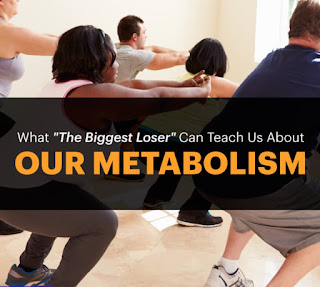Uncertain Health in
an Insecure World – 83
“Metabolism Optimism”
Cognitive neuroscientists believe that our brains are biased
towards optimism. The so-called ‘optimism bias’ foretells a future better than
the past. Most normal people share this bias, which energizes their faith in
good things to come. An innate sense of confidence borne of such irrational
optimism allows us to face and manage life’s uncertainties, without curling up
into the fetal position from past defeats. Depressed individuals often lack
this positive bias, and see the world more realistically, as a 50-50
proposition.
Is there is a scientific basis for the old adage, “hope springs eternal”?
Dr. Tali Sharot of the University College London (above) wrote about
this theory in her 2012 book, The
Optimism Bias: A Tour of the Irrationally Positive Brain. In a 2011 TIME
magazine cover story and at TED2012, she posited that, “Hope isn’t rational, so why are humans programmed for it?” In fact,
her research claims that 80% of humans experience “it” – the optimism bias. Other neuroscientists like Dr. David Hecht
(www.ncbi.nlm.nih.gov 2013) have
employed trans-cranial magnetic stimulation (TMS) of the left frontal lobe
cortex to turn optimistic volunteers into temporary pessimists.
Successful adaptation requires striking a fine balance
between optimism and pessimism.
Dr. Neil Weinstein made the first empiric observation on
this phenomenon in his 1980 paper, Unrealistic
Optimism about Future Life Events. The premise of such science can be
traced to the philosophy of Descartes, and was advanced by German polymath
Gottfried Leibniz who said that we “live
the best of all possible worlds.” Voltaire ridiculed this sunny world view
in Candide, a 1759 satire on human
suffering and misfortune wherein the protagonist’s tutor, Dr. Pangloss,
espouses Leibniz’s glossy pan-optimism.
In the real world, reality often bites.
A May 4, 2016 New York
Times article by Ilana Panich-Linsman described the shocking weight gain
observed in The Biggest Loser
contestants after the TV show ended (above). Contestant Danny Cahill optimistically declared that
“I’ve got my life back… I feel like a
million bucks,” after losing 239 pounds on the show. The once elated Mr.
Cahill gained back 100 pounds in the years that followed (below), largely because his
slowed metabolic rate never recovered following the contest. NIH’s Dr. Kevin
Hall studied these bitter Biggest Loser subjects for six years, showing that Mr.
Cahill now burns 800 calories less per day than what would be expected for a
man of his size. He called the study’s findings “frightening and amazing.” Slower resting metabolic rates
achieved during the show never recovered to normal levels, and on average, contestants
regained 90 of the 128 pounds of fat they had burned.
But is this reality TV show reflective of our collective
reality? Yes… and no.
Most people trying to lose weight don’t start out weighing
400-500 pounds like the fourteen contestants studied (above), whose average “metabolic penalty” was 500 calories per
day. A 2012 meta-analysis of data on 3,000 subjects in 71 different weight
reduction research studies revealed that the typical metabolic penalty was only
20-100 calories per day. Still, the multi-billion dollar diet and weight-loss “belly fat burning” supplement industry (below) feeds on the optimism of hope, fully aware of the grim post-weight loss rebound that fuels their continuing profits.
Such misplaced optimism is the reality of our increasingly
obese society.
Metabolomics (above) is an ‘omics
research discipline that explores interactions between the human genome (genotypes)
and the sub-cellular environment (epigenetics) with the individual appearance of
a disease (phenotypes). The field uses techniques like NMR, mass spectrometry, gas
chromatography and HPLC to tease out the metabolic signature of aging, cancer,
diabetes and heart disease. It is hoped that profiles of amino acids, organic
acids and fatty acids reflect the unique by-products of a particular disease. Using
pattern recognition algorithms to make a diagnosis, the information might prove
to be a powerful new tool for tuning in the precise therapy for an individual’s
condition (precision medicine).
The widely variable responses to the same drug being used to
treat complex diseases is one cause of the high cost of clinical trials.
Pharmaco-metabolomics studies the variable dose-response to drugs, which may be
a key hurdle to the widespread implementation of precision medicine approaches
to treat complex diseases. Key enzymes in metabolically active organs like the
liver process the breakdown of drugs slowly or quickly, significantly affecting
the dose required and the potential for drug side effects. Recognizable
differences (polymorphisms) in the cytochrome P-450 and P-2C19 systems for
metabolism of drugs like clopidogrel (Plavix™) can be detected by genetic
testing. Despite this, very few doctors use genotype testing to guide initial
antiplatelet therapy for heart attacks and stroke.
Biomolecular signatures for common human diseases and drugs all
sounds intriguing, to be sure.
But this metabolomics idea has been promising, or over-promising,
since before 2000. Perhaps the possible – precise analytic techniques that
generate reams of big data – is neither practical nor clinically adaptable. And
the optimistic launch and opportunistic acquisition of new companies spawned by
analytic chemists does not assure that such techniques will be adaptable for
medical care.
Equipoise is a state of cautious optimism firmly grounded in reality.
We gamely struggle to lose weight, then, beyond our
self-control, we passively gain it back.
And perhaps, the metabolomics revolution has just
been briefly postponed.
Like you, we in the Square, are eternal optimists. It's in our metabolism.
But science is not about cheerily cherry-picking the results that sound best.
But science is not about cheerily cherry-picking the results that sound best.










No comments:
Post a Comment